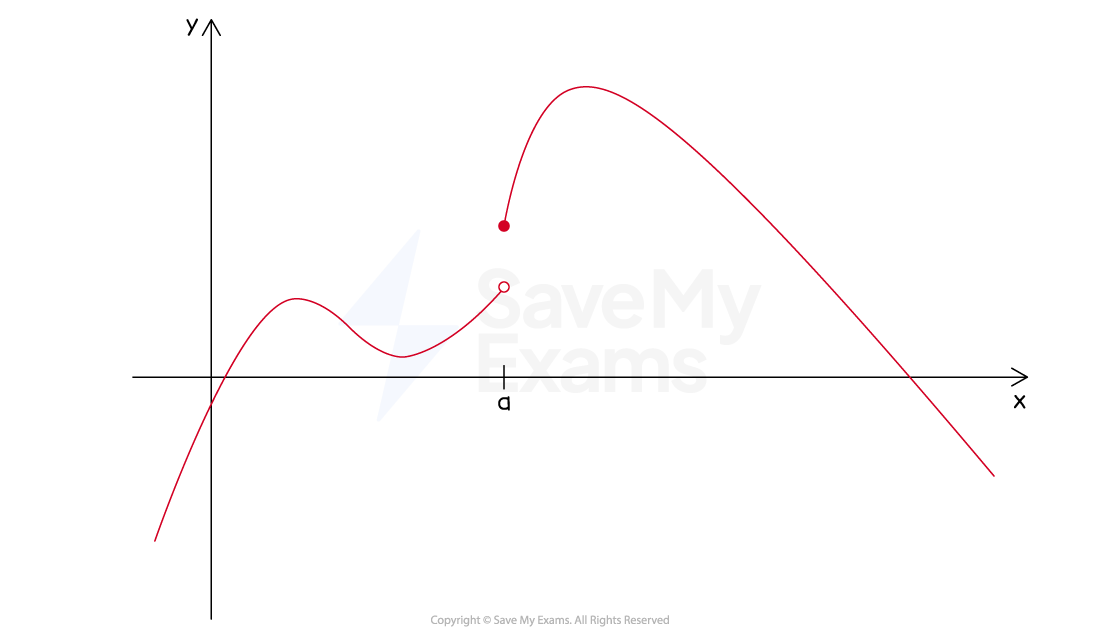Non-removable Discontinuities (College Board AP® Calculus AB): Study Guide
Jump discontinuity
What is a jump discontinuity?
A jump discontinuity occurs at a point where the value of a function makes a sudden 'leap' between two values

Where there is a jump discontinuity
The limit from the left and the limit from the right both exist
But they are not equal
A jump discontinuity is not a removable discontinuity
For example, consider the function
defined by
So
has a jump discontinuity at
Essential discontinuity
A function has an essential (or infinite) discontinuity at a point where
the limit from the left or the limit from the right (or both)
do not exist
or are infinite
A common example is where the graph of a function has a vertical asymptote

An essential discontinuity is not a removable discontinuity
For example, consider the function
defined by
(and
as well)
But
Because the right-hand limit is infinite,
has an essential discontinuity at

Unlock more, it's free!
Did this page help you?